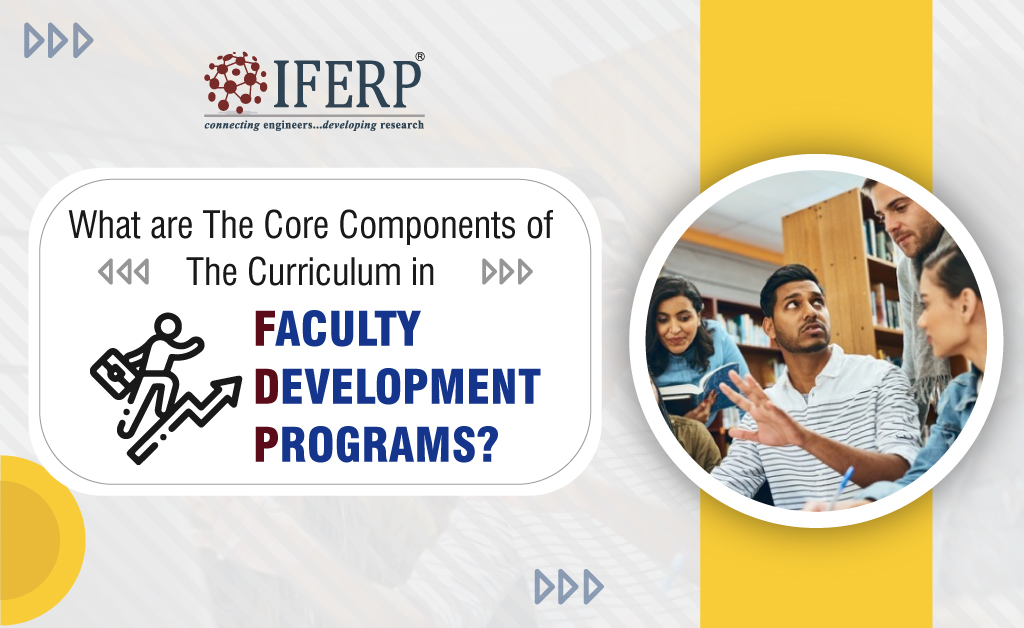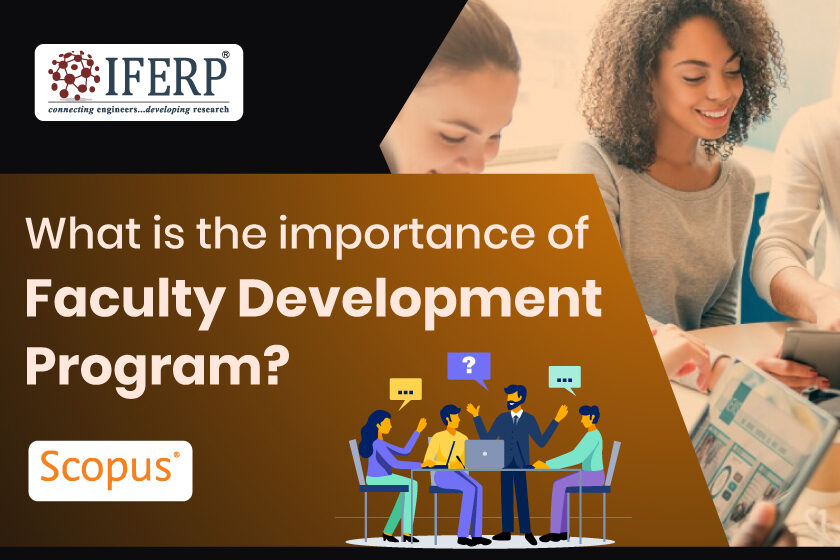Faculty development programs are integral to the continuous growth and success of teachers, as well as the positive impact on their students. The current era demands adaptive and innovative teaching methods to help students reach their full potential. How can these methods be cultivated? Where can educators acquire the necessary skills to meet modern teaching demands? What are the tangible benefits for both teachers and students? Let’s delve into these questions.
- What Are The Main Objectives Of Faculty Development Programs For Teachers?
- How Can Faculty Development Programs Enhance Teaching Effectiveness?
- Faculty development programs often aim to enhance teaching effectiveness by offering workshops, coaching, and resources designed around the latest educational theories and pedagogies.
- They provide educators with opportunities to engage in peer observations, reflection, and constructive feedback, thus helping them to refine their teaching practices.
- This continuous growth enables them to keep pace with the ever-changing demands of modern education.
- What Ways Can These Programs Foster Student Engagement?
- Student engagement is a vital element of effective teaching.
- Faculty development programs equip educators with various strategies and tools to actively engage students in the learning process.
- They may explore how to incorporate active learning, group collaboration, problem-solving tasks, and technology to facilitate a more interactive and stimulating classroom environment.
- By understanding the diverse needs and learning styles of students, teachers can create more engaging lessons.
- Where Can Teachers Find The Benefits In Students’ Academic Performance?
- How Are Faculty Development Programs Linked To Increased Student Motivation?
- By enhancing teachers’ skills and methodologies, faculty development programs indirectly influence student motivation.
- Teachers who are more confident and well-versed in their subjects can create more engaging and motivating learning experiences.
- By tailoring lessons to meet students’ individual needs and interests, they can spark curiosity and promote a deeper connection to the subject matter.

- What Impact Does Faculty Development Have On Student Satisfaction?
- Student satisfaction is often linked to their academic success and overall well-being in the educational environment.
- Faculty development programs help teachers understand how to build positive relationships with students, provide timely and constructive feedback, and create a supportive learning environment.
- This, in turn, leads to increased student satisfaction as they feel more valued and understood in their learning journey.
- How Can These Programs Contribute To Improved Academic Performance?
- Investment in faculty development translates to improved academic performance for students.
- By arming teachers with the latest teaching strategies, methodologies, and technological tools, students receive a more enriched and targeted education.
- The teachers’ continuous growth and adaptation to modern educational practices can lead to more effective learning, thus contributing to better grades and understanding of the subjects.
- Faculty development programs are not just a means to enhance the professional skills of teachers; they act as a catalyst for students’ growth and success.
- By focusing on teaching effectiveness, student engagement, and positive learning outcomes, they offer a comprehensive approach to modern education.
- Get a list of faculty development program events being organized by world-class conference and academic event organizers set to take place near you.
- What Are The Various Types Of Faculty Development Programs?
- In the rapidly evolving educational landscape, faculty development programs are essential to foster continuous growth and excellence among educators.
- A variety of types and modes are offered by different institutions and organizations, each catering to diverse needs, preferences, and learning styles.
- What are these different types?
- How do they compare in terms of effectiveness, flexibility, and suitability?
- These questions set the stage for an in-depth exploration of the array of faculty development programs available today.
- How Do Face-To-Face Faculty Development Programs Work?
- Face-to-face faculty development programs are traditional and require participants to attend in-person workshops, seminars, and conferences.
- They foster direct interaction and collaboration among peers and mentors.
- Some benefits include immediate feedback, more personalized learning, and stronger community building.
- However, they might lack flexibility for those with tight schedules or remote locations.
- Choose the best academic international conference events from our list of upcoming events.
- What Constitutes Online Faculty Development Programs?
- Online programs offer virtual workshops, courses, and resources accessible from anywhere with an internet connection.
- They provide flexibility, scalability, and can cater to a broader audience.
- The ability to learn at one’s pace can be a significant advantage, though the lack of immediate face-to-face interaction might not suit everyone’s preferences.
- Where Do Blended & Hybrid Programs Fit In?
- Blended and hybrid programs combine elements of both face-to-face and online learning.
- These programs allow participants to engage in both synchronous and asynchronous learning experiences, often balancing the immediate interaction of in-person sessions with the flexibility of online resources.
- This approach offers a compromise but requires careful planning to integrate both modes effectively.
- How Do Different Modes Suit Various Learning Styles & Preferences?
- What Advantages & Disadvantages Are Associated With Face-To-Face Programs?
- Face-to-face programs often excel in fostering community, networking, and personalized feedback.
- They can cater to those who prefer immediate interaction and tangible connections.
- The disadvantages may include limited accessibility for remote participants, potential higher costs, and scheduling constraints.
- How Can Online Programs Cater To Different Needs?
- Online programs offer accessibility, flexibility, and the ability to customize learning paths.
- They may be particularly appealing to those balancing multiple commitments or preferring to learn at their pace.
- The potential drawbacks include reduced opportunities for direct engagement, possible feelings of isolation, and the requirement for strong self-discipline.
- Where Do Blended & Hybrid Programs Strike A Balance?
- Blended and hybrid programs attempt to offer the best of both worlds, combining face-to-face engagement with online flexibility.
- They may be suitable for those seeking a more adaptable learning experience but require well-designed integration to avoid disjointed learning experiences.
- The landscape of faculty development programs is rich and diverse, offering a multitude of options to cater to various preferences, needs, and learning styles.
- From traditional face-to-face programs to fully online, blended, or hybrid modes, the choices are vast.
- By exploring the what, where, how, and who of these different types, we can appreciate the innovative and adaptive nature of contemporary faculty development.
- Ultimately, the effectiveness of a program will depend on aligning with individual needs, institutional goals, and a continual commitment to quality and relevance.
- In a world where education is continuously evolving, the tailored application of these different modes ensures that faculty development remains a dynamic and essential facet of academic excellence.
- What Are The Core Components Of The Curriculum In Faculty Development Programs?
- Faculty development programs play a critical role in enhancing the knowledge, skills, and effectiveness of educators across various domains.
- The curriculum and pedagogy of these programs are designed to align with specific learning objectives and outcomes.
- But what constitutes the core of these programs?
- How are case studies, simulations, and research methods integrated into the learning process?
- What impact do these components have on student success?
- Let’s unravel these questions by delving into the intricacies of the curriculum and pedagogy of faculty development programs.

- How Are Learning Objectives & Outcomes Defined?
- The curriculum in faculty development programs is carefully structured around defined learning objectives and outcomes.
- These guide the content, pedagogy, assessment, and overall structure of the program.
- They ensure that participants gain targeted skills, knowledge, and attitudes that translate into improved teaching practices.
- What Role Do Case Studies Play In Faculty Development?
- Case studies are often used to provide real-world context and applicability.
- They allow educators to analyze, reflect, and apply theoretical concepts in practical scenarios.
- By engaging with case studies, participants can develop critical thinking and problem-solving skills and a deeper understanding of educational challenges and opportunities.
- How Are Simulations Used To Enhance Learning?
- Simulations provide hands-on experiences that mimic real-life situations.
- They enable faculty to practice, experiment, and learn in a safe and controlled environment.
- Whether it’s managing a virtual classroom or applying specific teaching strategies, simulations offer a dynamic and engaging way to build competencies.
- Where Do Research Methods Fit Into The Curriculum?
- Research methods are an integral part of faculty development, especially for those engaged in scholarly activities.
- They equip educators with the tools to conduct systematic inquiries, analyze data, and contribute to the broader knowledge base.
- Understanding and applying research methods can lead to more evidence-based practices and innovation in teaching, eventually giving you the chance to have your research published in fast Scopus journals and publication.
- How Is The Curriculum Aligned With Pedagogy?
- What Teaching Strategies Are Employed In Faculty Development Programs?
- The pedagogy of faculty development programs often encompasses a blend of lectures, workshops, group activities, mentoring, and self-directed learning.
- This variety caters to different learning styles, promotes collaboration, fosters reflection, and ensures that learning is active, engaging, and meaningful.
- IFERP professional memberships can help you gain access to the world’s best faculty development programs. Avail of a membership today.
- How Do Activities Like Case Studies, Simulations, & Research Impact Student Success?
- These interactive activities directly influence student success by enhancing the quality of teaching.
- Faculty members who engage in case studies, simulations, and research methods are more likely to implement innovative and effective strategies in their classrooms.
- This, in turn, can lead to increased student motivation, satisfaction, and academic performance.
- The curriculum and pedagogy of faculty development programs are thoughtfully designed to provide a comprehensive and engaging learning experience.
- Through the integration of case studies, simulations, research methods, and other dynamic activities, these programs align with specific learning objectives and outcomes.
- They not only equip faculty members with the necessary skills and knowledge but also foster an environment of continuous improvement and innovation.
- As educators continue to navigate the evolving landscape of teaching and learning, these programs remain pivotal in shaping success for both teachers and students.
- In an ever-evolving educational landscape, faculty development programs must continually adapt to meet changing needs and expectations.
- These changes present both challenges and opportunities for the design, implementation, and effectiveness of such programs.
- What are these challenges?
- How do they impact educators and students?
- Where lie the opportunities amidst the constraints?
- Let’s investigate these questions to gain a nuanced understanding of the complex dynamics at play in the context of faculty development programs.
- What Challenges Arise In The Context Of Changing Educational Needs?
- How Does Lack Of Resources Impact Faculty Development Programs?
- A common barrier to the effective implementation of faculty development programs is the lack of essential resources.
- Whether financial constraints, inadequate technological infrastructure, or limited access to expert guidance, these resource challenges can limit the reach and impact of development initiatives (such as any high-level skill development program or faculty development program).
- What Role Does Time Play In The Effectiveness Of These Programs?
- Time is a critical factor that can hinder participation and engagement.
- Educators juggling teaching, research, and administrative responsibilities may struggle to find the time for professional development.
- This challenge often leads to less optimal outcomes, potentially affecting both teaching quality and student success.
- Professional memberships at organizations such as IFERP help tremendously in this regard.
- Where Does Lack Of Support Create Obstacles?
- Institutional support, including clear policies, encouragement from leadership, and alignment with organizational goals, is vital for the success of faculty development programs.
- Lack of such support can lead to fragmented efforts, decreased motivation, and reduced effectiveness in achieving the desired outcomes.
- What Opportunities Exist Amidst These Challenges?
- How Can Technology Enhance Faculty Development?
- The rise of digital tools, online platforms, and technological innovations offers significant opportunities for faculty development.
- Whether through virtual workshops, online resources, or adaptive learning technologies, technology can expand access, enhance personalization, and create more flexible learning paths.
- Where Do Collaborations & Partnerships Create New Possibilities?
- Collaborations and partnerships with other institutions, industry experts, or educational technology companies can unlock new possibilities.
- These connections can lead to shared resources, innovative practices, and a broader perspective on educational trends and needs.
- What Impact Do Tailored Programs Have On Meeting Individual Needs?
- Recognizing the diverse needs of faculty, some institutions are creating tailored programs that align with specific disciplines, career stages, or learning preferences.
- These customized approaches can more effectively address the unique challenges and opportunities faced by different educators.
- How Do These Challenges & Opportunities Translate To Benefits For Students?
- Addressing the challenges and leveraging the opportunities within faculty development programs has direct implications for student success.
- Enhanced teaching practices, more engaged and motivated educators, and the integration of innovative strategies can lead to increased student motivation, satisfaction, and academic performance.
The challenges and opportunities of faculty development programs in the context of changing educational needs and expectations are multifaceted and complex. From resource constraints to time pressures, and lack of support to technological advancements, the landscape is marked by contrasts and potential. By doing so, faculty development programs can continue to evolve, thrive, and play a vital role in shaping the future of education for both teachers and students.


